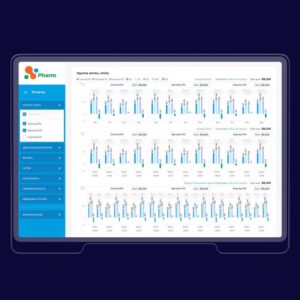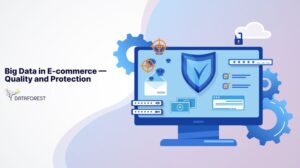- Home
- /
- Services
- /
- Digital Transformation
- /
- ERP Data Integration: Enterprise Unification
ERP Data Integration Service: Enterprise Unification
Solutions for ERP Data Integration
CRM and ERP Integration in Industries
Optimize Manufacturing Plans
- Streamline production schedules with smarter data integration.
- Align resources for better efficiency through process standardization.
- Reduce downtime and improve output predictability.
Forecast Inventory & Demand in Retail
- Use data-driven insights to predict inventory needs and customer demand.
- Minimize stockouts or overstock situations.
- Make retail operations more responsive with business intelligence tools.
Automate Financial Processes
- Consolidate financial data seamlessly across systems.
- Reduce manual errors in reporting and reconciliation.
- Gain quicker insights into financial health with digital transformation strategies.
Manage Healthcare Resources
- Optimize resource allocation for medical staff and equipment.
- Improve patient flow with integrated scheduling and tracking.
- Reduce wait times through continuous process improvement.
Dynamic Logistics Solutions
- Plan routes and allocate resources in real time based on data.
- Cut transportation costs while boosting delivery speed.
- Respond to demand spikes or delays instantly with scalable infrastructure.
Streamline Project Resources
- Allocate teams and tools efficiently for professional services projects.
- Monitor project progress and adapt resources as needed.
- Deliver on time with smarter planning and middleware solutions.
Stop the data chaos – get your systems talking to each other!
Our Success Stories: Driving Digital Transformation Forward
Check out a few case studies that show why VOLTERA will meet your business needs.
Stock relocation solution
The client was faced with the challenge of creating an optimal assortment list for more than 2,000 drugstores located in 30 different regions. They turned to us for a solution. We used a mathematical model and AI algorithms that considered location, housing density and proximity to key locations to determine an optimal assortment list for each store. By integrating with POS terminals, we were able to improve sales and help the client to streamline its product offerings.

Client Identification
The client wanted to provide the highest quality service to its customers. To achieve this, they needed to find the best way to collect information about customer preferences and build an optimal tracking system for customer behavior. To solve this challenge, we built a recommendation and customer behavior tracking system using advanced analytics, Face Recognition, Computer Vision, and AI technologies. This system helped the club staff to build customer loyalty and create a top-notch experience for their customers.

Performance Measurement
The Retail company struggled with controlling sales and monitoring employees’ performance. We implemented a software solution that tracks sales, customer service, and employee performance in real-time. The system also provides recommendations for improvements, helping the company increase profits and improve customer service.

Supply chain dashboard
The client needed to optimize the work of employees by building a data source integration and reporting system to use at different management levels. Ultimately, we developed a system that unifies relevant data from all sources and stores them in a structured form, which saves more than 900 hours of manual work monthly.

Michelle Nguyen
Senior Supply Chain Transformation Manager Unilever, World’s Largest Consumer Goods Company
View case study →

B2B ERP Integration Technologies
Lama 2
Zilliz
Weaviate
Stable Difusion
Qdrant
Pix2Pix
Pinecone
Pgvctor
OpenAI
Momento
Mixtral
Llava
Hugging Face
Faiss
Chroma
ChatGPT
Activeloop
YOLO
SageMaker
Pillow
NLTK
Keras
SciPy
Redis
Avoid downtime and ensure a smooth transition during your ERP transformation with our step-by-step approach.
The Way to Seamless ERP Data Integration
Define Business Needs and Objectives
01
Assess Existing Systems and Compatibility
02
Develop an Integration Strategy
03
Map and Standardize Data Flows
04

Implement the Integration Framework
05
Test for Accuracy and Performance
06
Users' Feedback
06
Deploy and Monitor the ERP Integration
07
Users' Feedback
06
Train and Support Your Team
08
Users' Feedback
06
Challenges Enterprise Resource Planning Integration
These challenges revolve around integrating and streamlining complex systems for better efficiency and smoother operations. Businesses can reduce errors and improve productivity by automating processes and ensuring smooth communication between systems.
Manual Reconciliation and Data Inconsistencies
Real-time Reporting Limitations
System Compatibility and Legacy Integration Issues
Manual Reconciliation and Data Inconsistencies
Real-time Reporting Limitations
System Compatibility and Legacy Integration Issues
High Operational Complexity
ERP Data Integration Benefits
Custom ERP Design
Predictive Resource Planning
AI Financial Forecasting
Smart Supply Chain Management
Auto Inventory Optimization
Dynamic Cost Allocation







